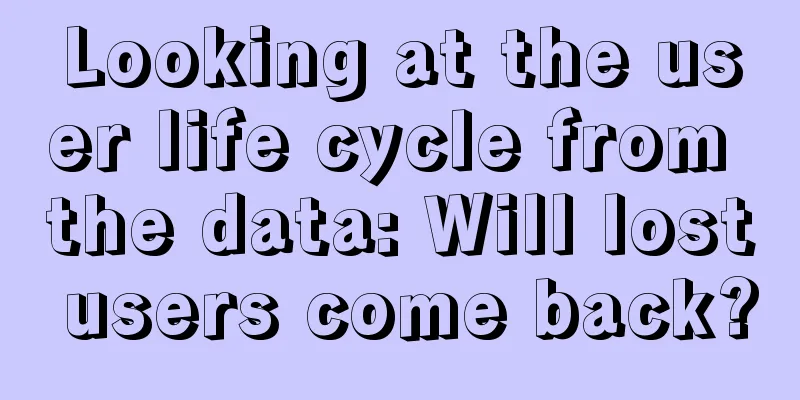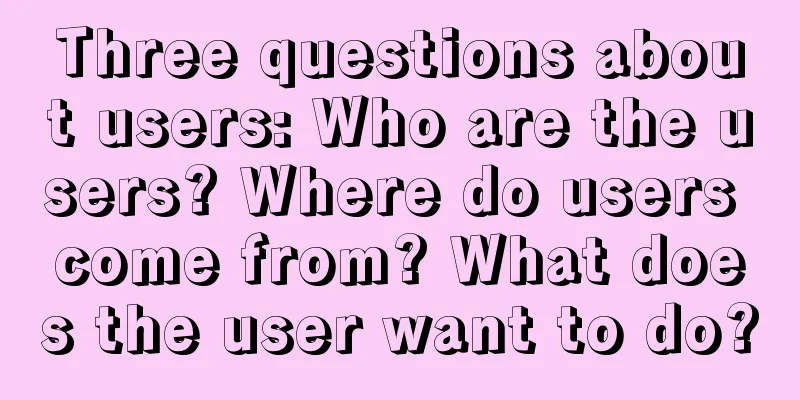WeChat's anxiety may be more serious than you think

|
WeChat has been revamped, and many users who updated the app were a little confused at first because the changes are so huge. But if you think about it carefully, it’s nothing, it’s just that we are too familiar with the old appearance of WeChat. Judging from the recent status of Zhang Xiaolong and Ma Huateng, WeChat and even Tencent have felt a deep crisis. Otherwise, Tencent and the entire market would have been excited just because a non-key official from a department released a piece of specious and insubstantial "good news" about the game. Some people say that the rise of DingTalk has put pressure on WeChat. Indeed, Tencent created WeChat for Business because of DingTalk. It was very high-profile at the beginning, but now it has almost disappeared, except for occasionally releasing shocking user data. It is very simple. Any application, as long as it is driven by WeChat's traffic, will almost inevitably have a crazy increase in users in a short period of time, but then it can only protect itself. As for the enterprise side, it is not Tencent's forte. Therefore, Tencent, which is best at researching and improving products, once again transplanted the attractive parts of all other software to WeChat, which suddenly possessed the advantages of DingTalk, Alipay, Snapchat and Instagram in domestic and foreign applications. If you can't learn from Qiao Feng, then learn from Murong Fu.
WeChat has undergone revisions more than once. It is said that it has undergone seven major revisions in eight years. Tencent’s strength is to design products that keep pace with the times. In September, WeChat also made more than ten major and minor changes, including subscription account information flow, mini-programs, look, search, emoticons, etc. However, many places were later changed back. The revision of WeChat this time seems abrupt, but in fact most of it is concentrated on short videos. From this, we can see that the effect of adding "Weishi Recording" to WeChat Moments in the previous stage was not ideal, and the development of Weishi was even more unsatisfactory. Now we can only rely on WeChat to charge forward. Anyone who pays attention to social products can see that Moment Video is a "transplant" of the Snapchat and Instagram Stories functions, and "good-looking" replaces "like". "Because it is seen, it exists". From the name, you can intuitively see that it is prepared for short videos. However, although these changes reflect Tencent's thinking, it is not certain whether users will buy into them. WeChat has been cautious in the video field for several years. On the one hand, this is inconsistent with its architecture, and on the other hand, it is inconsistent with Zhang Xiaolong's original intention of WeChat. It can also be seen from Tencent’s strategy that the core of “connecting everything” is WeChat, which will inevitably lead to WeChat carrying more and more functions. Since the interface is so small, the main communication function of people using WeChat will be further weakened. Relying on mini-programs to solve the bloated page seems to be a way, but it cannot become the engine of the digital economy. Once upon a time, when people were analyzing why China Mobile's Fetion could not compete with QQ and WeChat, they thought that China Mobile's purpose for Fetion was impure, that it had too many motives, and that it had to meet the company's various needs, while WeChat concentrated all its resources on communication. However, now WeChat has also embarked on this path. In terms of the product life cycle, WeChat was born in the 3G era, created glory in the 4G era, and the upcoming 5G may be the end of the downward cycle. This is a natural law that no product can reverse. In the 3G and 4G era, operators including China Mobile were turned into pipelines by WeChat, just as China Mobile turned fixed broadband into a pipeline through mobile phones. Now, in the upcoming 5G era, WeChat will also be completely pipelined, but WeChat does not have the qualifications to charge for pipelines. Tencent’s pressure can be imagined. Although the outside world is singing praises for WeChat, the management team should be more aware of the real difficulties than anyone else. If WeChat wants to avoid becoming a dumb pipe, or continue to generate revenue even if it becomes a pipe, it can only learn from the operators to create content. This content is not Tencent Video or Tencent Games, but WeChat’s own content. Otherwise, users will run away and leave. Once this happens, the foundation of Tencent will rot. Nowadays, 5G is mainly used in the Internet of Things for video, driverless cars, and smart homes. However, using WeChat to drive is not something WeChat can do. The Internet of Things can use WeChat to make it smart, but turning something that connects people into a connected object will cause a lot of internal conflicts. The lowest risk is obviously to make videos. Most Internet people who don’t study communications believe that with WeChat’s traffic resources, making videos is obviously a piece of cake. But if that were the case, WeChat would have done it long ago, and there would be no need to be shy about it until today. The main reason is that WeChat, designed for 3G networks, is no longer suitable for large-bandwidth environments. A simple example is that once the highway is built, no matter how advanced the tractor is, it will be eliminated. Although we don’t know whether it will be Ferrari or McLaren, there is at least one conclusion: no matter how modified the tractor is, it will never become the king on the highway. In 2018, the data of the three telecom operators clearly showed that the user growth has peaked. If it were not for the active dual-SIM phones, the decline in the number of users would have already arrived. With this base number, the growth of real-name users (not WeChat registered users) with unique ID cards should have stagnated. The big ceiling has undoubtedly arrived. WeChat has to deal with growth crises on the one hand and technical difficulties on the other. Change has become the only option. It’s lonely at the top. The WeChat myth continued to perform poorly in 2018. Mobike, which was injected with WeChat traffic, had to be handed over to Meituan to monetize through listing. The super species incubated by Yonghui Supermarket also had to divest its main business to survive. The era of economies of scale gave way to economies of scope, and WeChat had to change itself into what it once hated the most. History is moving forward. It doesn’t matter whether it looks ugly or not, and it doesn’t matter whether what was said is fulfilled or not. Just like Vanke, as long as it survives, it’s fine. About the author: Ma Jihua
|
<<: Starting from CES 2019, what changes will there be in the smartphone industry?
Recommend
Alipay's "Five Blessings" campaign is officially launched! Come and share 500 million yuan
At midnight on February 1st, the 2021 Alipay Five...
The most powerful growth method for user retention
What is a behavioral model? In fact, it is a habi...
A guide to avoiding pitfalls in event operations!
When holding an event, it is often the case that ...
The great American developer teaches you three tricks to get into the App Store recommended catalog!
Introduction: Robleh Jama is an experienced appli...
Detailed explanation of the Glide cache mechanism principle for advanced Android source code
[[420787]] This article is reprinted from the WeC...
Detailed explanation of Android Bitmap cache pool usage
This article introduces how to use cache to impro...
How to do high-quality marketing?
2014 was a boom year for mobile healthcare. Accor...
Testing strategy and testing architecture for mobile applications
Today we will talk about the testing strategy and...
How to use Weibo marketing to create a brand fan festival?
How to use Weibo marketing to create a brand fan ...
How many WeChat payment accounts are bound to your ID card? Check the official guide
[[348178]] Nowadays, personal privacy seems to be...
How to place KOLs on Weibo and WeChat to achieve the maximum effect?
Kol, Key Opinion Leader, is basically those peopl...
From the perspective of "user experience", "cost" and "revenue", which one has a better future, Mobike or ofo?
Restore the user usage scenario: Register, log in...
Apple has started "crackdown mode", and many apps have stopped being in the app title!
Recently, in the process of communicating with de...
Summary of Android and IOS promotion skills
Many products now spend their time and energy on ...
Psychological Effects: Gamification Strategies Based on User Growth
The gamified user growth plan explored through ps...









